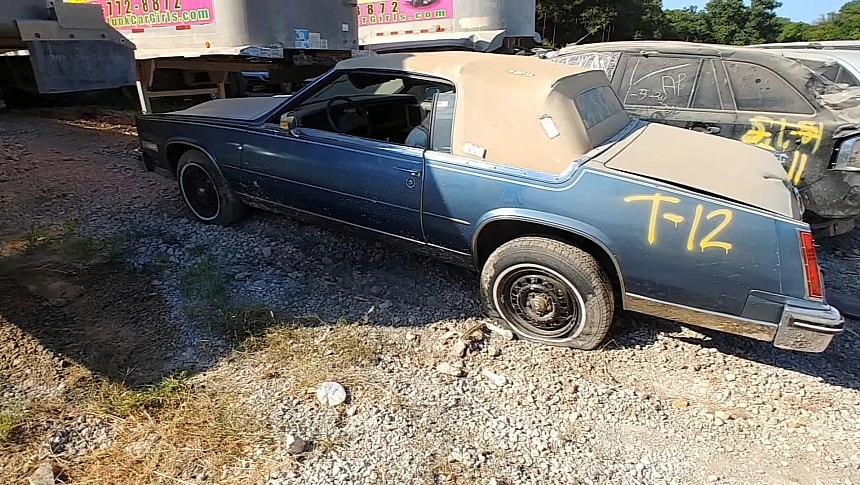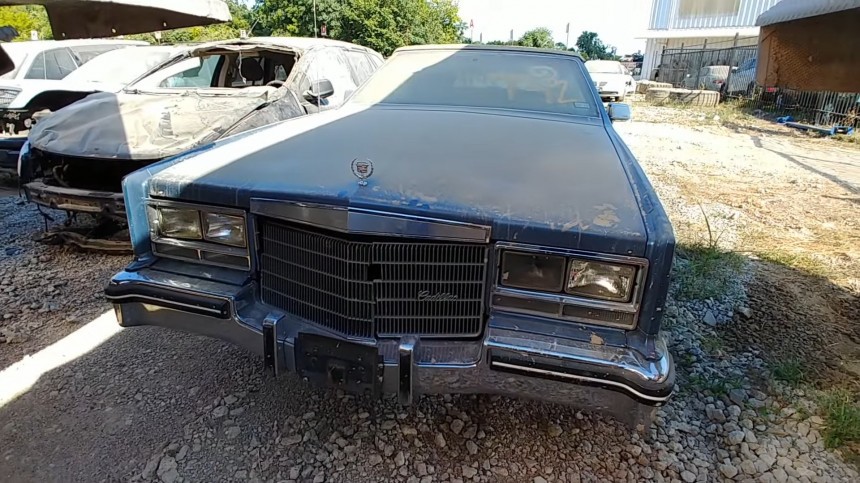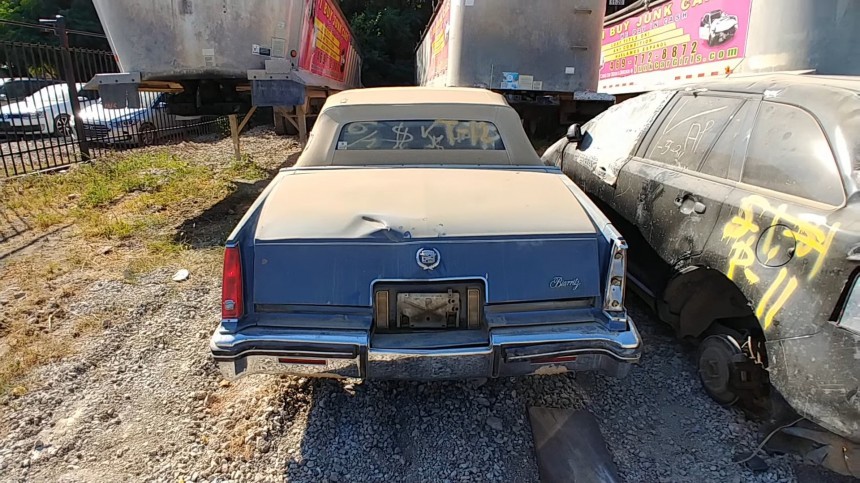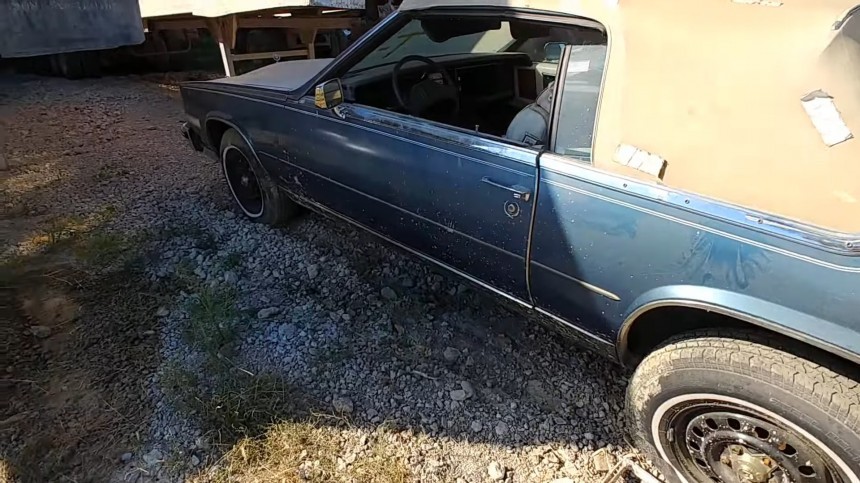In 1976, Cadillac, like everyone else living in the Land of the Free, was celebrating two centuries of independence. The luxury division of General Motors was also saying goodbye to one of its most revered status-quo symbols – the droptop automobile. At the time, Cadillac claimed they had built the last American convertible. Eight years later, they had a change of heart and revived the open-air motoring offers.
Convertibles faded out of fashion in the seventies for reasons beyond this story's purpose. Still, out of the Big Three from Detroit, ChryCo ditched the ragtops first in 1971. Ford stopped production for dropheads two years later, and GM began singing the swan song in 1975. A year later, a white Fleetwood Eldorado was hailed off the assembly line as the last American-built soft-top. April 21, 1976, is the day when a tradition that began in 1916 was brought to an end.
At the time, Cadillac announced the end of an era. Come 1984, the division changed its mind drastically and put the Eldorado Biarritz convertible back in the sales brochures. However, buyers’ enthusiasm was far from encouraging—some 3,300 examples carried cloth-and-rack weather protection over the passengers. By comparison, the coupe production of the Eldorado was 74,506 examples.
1985 saw another Cadillac effort to promote the ragtop on consumers’ plates, but it failed even more spectacularly, with 2,300 Biarritz-ed Eldorados leaving the assembly plants. By then, the Biarritz moniker no longer designated just the convertibles. In 1985, almost three decades since the first iteration of the emblem (in 1956), the open-top Cadillac was back.
Not with a vengeance, but back – albeit in a meteoric appearance – and the limited numbers give those cars some aura of exotism. Otherwise, collectors don’t rush in to get their hands on one, proving that simply because a vehicle is rare doesn’t make it overly desirable, just as the opposite is also valid. After all, how many Impalas and Mustangs are pulled out of boneyards and barns every day and still fetch incredibly high prices?
Take the car in the video below as a perfect example: a loaded and decent-looking 1985 Eldorado Biarritz sitting in a Fort Worth, Texas, junkyard. That’s a luxury car ditched in the exhaust tip end of motoring, a true American symbol of excellence that used to be the world standard. The car nut who found this unlikely gem is a boneyard regular – Benny Sanchez from the Classic Ride Society YouTube channel – and he’s not easily impressed by crusher candidates.
However, a Cadillac is not your everyday junkyard find, all the more when said car belongs to a very low-production series. But it is what it is – or what it isn’t, in our case: the car looks solid and decent despite the messed-up interior, the dented deck lid, and the cracked grille. The rest is all there – engine, transmission, rear end. Even the underpinnings are clean and rust-free.
However, that 4.1-liter Digital Fuel Injection V8 is not the best of eight-bangers to wrench on, and getting the questionable electronics of the mid-eighties back online is simply not worth the hassle of rescuing this Cadillac. In 1985, the HT4100 engine was the only motor offered for the convertible Eldorado Biarritz, despite the division’s offer of two other V8s.
Unfortunately, both of those (a 4.3-liter and a 5.7-liter) were Diesels with despicable reputations, especially in a luxury car. Unlike some of its other siblings (such as the De Ville and the Fleetwood—including the limousine), the Eldorado had a classic longitudinally mounted V8. The Seville and the Fleetwood Brougham shared the same architecture—for whatever reason, Cadillac decided to play around with engine bay space.
However, it wasn’t all nice and dandy with the Cadillac convertibles of the eighties. A class action lawsuit was filed against General Motors by a group of Cadillac owners who had purchased the 1976 edition. They claimed that the manufacturer had broken its end of the promise when they stated that those Malaise droptops were to be the ‘last’ ever. Eventually, the corporation got on top of things and came out clean of the judicial nuisance.
Thirty-nine years ago, a Biarritz convertible would set a buyer back some $32,105 (the base Manufacturer's Suggested Retail Price - MSRP). In 2024 money, that’s about $93,710. Unfortunately, the Cadillacs of today no longer support the idea of breezeway motoring, instead focusing on high-tech options and oversized (and utterly pointless) urban SUVs.
This poor Biarritz is quite rare, and it hasn’t been that long since it was last on the road. According to the stickers, in 2019, it was still in use. The odometer shows 47,722 miles – 76,801 km – and it's most likely original, given the car's overall condition. But would it deserve a second chance – and what would a hypothetical restoration cost?
At the time, Cadillac announced the end of an era. Come 1984, the division changed its mind drastically and put the Eldorado Biarritz convertible back in the sales brochures. However, buyers’ enthusiasm was far from encouraging—some 3,300 examples carried cloth-and-rack weather protection over the passengers. By comparison, the coupe production of the Eldorado was 74,506 examples.
1985 saw another Cadillac effort to promote the ragtop on consumers’ plates, but it failed even more spectacularly, with 2,300 Biarritz-ed Eldorados leaving the assembly plants. By then, the Biarritz moniker no longer designated just the convertibles. In 1985, almost three decades since the first iteration of the emblem (in 1956), the open-top Cadillac was back.
Take the car in the video below as a perfect example: a loaded and decent-looking 1985 Eldorado Biarritz sitting in a Fort Worth, Texas, junkyard. That’s a luxury car ditched in the exhaust tip end of motoring, a true American symbol of excellence that used to be the world standard. The car nut who found this unlikely gem is a boneyard regular – Benny Sanchez from the Classic Ride Society YouTube channel – and he’s not easily impressed by crusher candidates.
However, a Cadillac is not your everyday junkyard find, all the more when said car belongs to a very low-production series. But it is what it is – or what it isn’t, in our case: the car looks solid and decent despite the messed-up interior, the dented deck lid, and the cracked grille. The rest is all there – engine, transmission, rear end. Even the underpinnings are clean and rust-free.
Unfortunately, both of those (a 4.3-liter and a 5.7-liter) were Diesels with despicable reputations, especially in a luxury car. Unlike some of its other siblings (such as the De Ville and the Fleetwood—including the limousine), the Eldorado had a classic longitudinally mounted V8. The Seville and the Fleetwood Brougham shared the same architecture—for whatever reason, Cadillac decided to play around with engine bay space.
However, it wasn’t all nice and dandy with the Cadillac convertibles of the eighties. A class action lawsuit was filed against General Motors by a group of Cadillac owners who had purchased the 1976 edition. They claimed that the manufacturer had broken its end of the promise when they stated that those Malaise droptops were to be the ‘last’ ever. Eventually, the corporation got on top of things and came out clean of the judicial nuisance.
This poor Biarritz is quite rare, and it hasn’t been that long since it was last on the road. According to the stickers, in 2019, it was still in use. The odometer shows 47,722 miles – 76,801 km – and it's most likely original, given the car's overall condition. But would it deserve a second chance – and what would a hypothetical restoration cost?






























